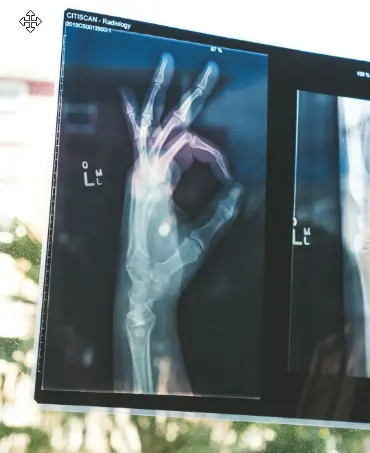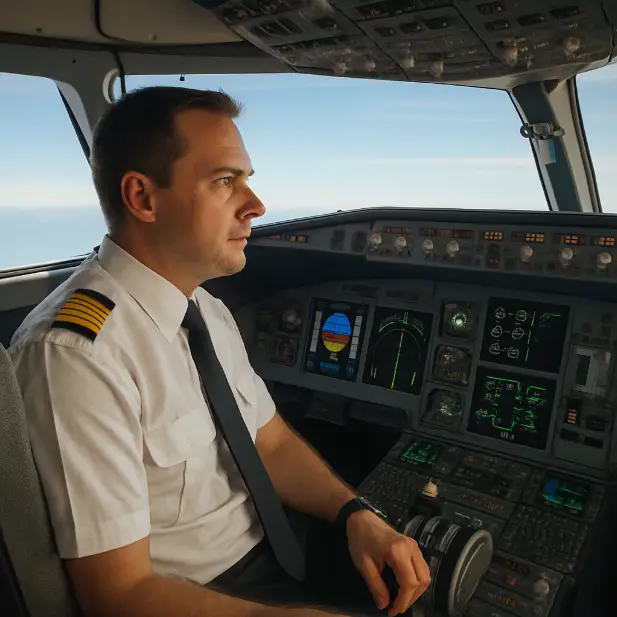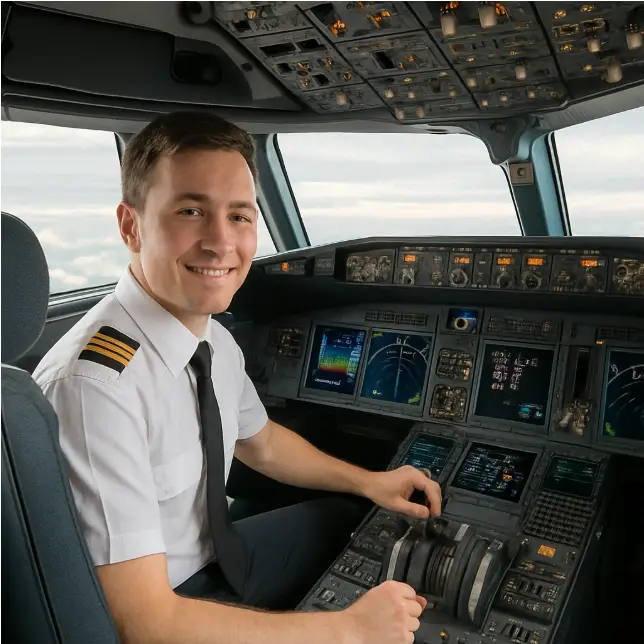Obtaining AME Medical Certificates

- aviatorpro_6714
Entering the world of aviation is an exciting journey, filled with dreams of soaring through the skies and exploring new horizons. However, before you can embark on this thrilling adventure, there are essential requirements that need to be met to ensure safety and compliance with aviation standards. Among these critical prerequisites is obtaining an AME (Aviation Medical Examiner) medical certificate. This certification is not just a formality; it is a vital step for anyone aspiring to become a pilot. It ensures that you meet the necessary health and fitness standards to fly safely, safeguarding not only your well-being but also that of your passengers and crew. In this article, we’ll explore the importance of AME medical certificates, the detailed process of obtaining one, and how it fits seamlessly into your flight school journey.
Understanding AME Medical Certificates

by Owen Beard (https://unsplash.com/@owenbeard)
Before diving into the intricate details of obtaining an AME medical certificate, it’s important to clarify what exactly this document entails. An AME medical certificate is an official document provided by a certified Aviation Medical Examiner, which confirms a pilot’s physical and mental fitness to operate an aircraft. It is a testament to the pilot’s ability to handle the unique challenges of flying, ensuring they do not suffer from any medical conditions that could impair their ability to fly safely and effectively. This certification acts as a safety net, preventing potential in-flight medical emergencies that could jeopardize the safety of the flight.
Types of AME Medical Certificates
AME medical certificates are categorized into three classes, each tailored to different levels of piloting responsibilities and privileges:
- First-Class Medical Certificate: This is the most comprehensive certification, required for airline transport pilots who operate large commercial aircraft. The rigorous standards ensure these pilots are in peak physical condition, as they bear the responsibility of hundreds of passengers. For pilots over 40 years old, the certificate must be renewed every six months, reflecting the heightened health vigilance required at this level. For those under 40, an annual renewal suffices, balancing thoroughness with practicality.
- Second-Class Medical Certificate: This certification is necessary for commercial pilots who transport passengers or cargo on a smaller scale than airline transport pilots. It is valid for 12 months, regardless of the pilot’s age. The second-class certificate ensures that these pilots maintain a high standard of health, given their role in the commercial aviation sector, where they manage critical aspects of flight safety.
- Third-Class Medical Certificate: Designed for private pilots, this certificate acknowledges the recreational nature of their flying activities while still maintaining essential safety standards. It is valid for 60 months for pilots under 40 and 24 months for those 40 and older. This flexibility reflects the less frequent flying schedules of private pilots, while still ensuring they meet necessary health benchmarks to operate safely.
Why AME Medical Certificates are Important
The aviation industry places an unwavering emphasis on safety, and medical certification is a fundamental pillar in maintaining these high safety standards. Pilots hold immense responsibility, not only for the safety of their passengers and crew but also for the aircraft and the broader public. AME medical certificates serve as a critical checkpoint, ensuring that pilots are physically and mentally equipped to meet these responsibilities without endangering themselves or others. This certification process is not just about meeting regulatory requirements; it’s about fostering a culture of safety that permeates every aspect of aviation operations. By verifying that pilots are in top health, AME medical certificates help to minimize risks and uphold the aviation industry’s reputation for safety and reliability.
The Process of Obtaining an AME Medical Certificate

by Lewis Keegan (https://unsplash.com/@skillscouter)
With an understanding of the importance of AME medical certificates, let’s delve into the step-by-step process of obtaining one. While the steps are straightforward, they require meticulous attention to detail and thorough preparation.
Step 1: Schedule an Appointment with an AME
The first step in obtaining your AME medical certificate is to schedule an appointment with an Aviation Medical Examiner (AME). These are certified doctors who are authorized by aviation authorities, such as the FAA (Federal Aviation Administration), to conduct medical examinations specifically for pilots. Selecting an AME who is conveniently located and has a good reputation can make the process smoother. You can find a list of approved AMEs on the FAA website or through your flight school, which often maintains a network of recommended medical professionals.
Step 2: Complete the Medical Application
Prior to your appointment, you will need to complete a medical application, known as Form 8500-8. This form is comprehensive and requires you to provide personal information, a detailed medical history, and specific details about any medications you are currently taking. It is crucial to be honest and thorough when filling out this form, as any discrepancies or omissions could lead to complications or delays in your certification process. Being forthright about your medical history ensures that the AME can accurately assess your fitness to fly, which is essential for your safety and that of others.
Step 3: Undergo the Medical Examination
During the examination, the AME will conduct a series of tests to assess various aspects of your health. These tests generally include:
- Vision Test: To ensure you have good visual acuity and color vision, both of which are critical for reading instruments and identifying signals.
- Hearing Test: To confirm you can hear instructions and communications clearly, which is essential for effective communication with air traffic control and other pilots.
- Blood Pressure and Heart Examination: To check for any cardiovascular issues that could affect your ability to handle the physical demands of flying.
- Neurological and Mental Health Evaluation: To assess your mental fitness to fly, ensuring you can handle the stresses and responsibilities of piloting an aircraft.
Step 4: Receive Your Medical Certificate
If you meet all the necessary requirements and pass the examination, the AME will issue your medical certificate on the spot. In cases where there are concerns or uncertainties regarding your health, the AME may refer your case to the aviation authorities for further evaluation. This additional scrutiny ensures that all pilots meet the stringent health standards required for safe flight operations, maintaining the aviation industry’s commitment to safety.
Common Medical Conditions and Considerations
Certain medical conditions can impact your ability to obtain an AME medical certificate. Understanding these conditions and how they are evaluated can help you better prepare for the examination and address any potential issues in advance.
Vision and Hearing
- Vision: Pilots must have 20/20 vision or corrected vision to ensure they can read instruments and observe their surroundings accurately. If you wear glasses or contact lenses, it is important to ensure your prescription is current and provides the necessary correction.
- Hearing: Good hearing is vital for clear communication with air traffic control and other pilots. Any hearing impairments must be addressed with appropriate aids or corrective measures to ensure effective communication in all flight conditions.
Cardiovascular Health
- Blood Pressure: Pilots must maintain blood pressure within acceptable limits to prevent potential health risks while flying. If you have hypertension, it must be well-controlled with medication or lifestyle changes to meet the standards required for safe flying.
- Heart Conditions: Conditions such as arrhythmias or a history of heart attacks require thorough evaluation to determine their impact on your ability to fly. In some cases, additional tests or specialist opinions may be necessary to assess your fitness.
Mental Health
- Psychiatric Disorders: Conditions such as depression or anxiety are evaluated on a case-by-case basis. Pilots must demonstrate mental stability and the ability to manage any condition effectively to ensure they can handle the stresses and responsibilities of flying without compromising safety.
Preparing for Your Medical Examination

by Drew Hays (https://unsplash.com/@drew_hays)
Adequate preparation for your AME medical examination can help ensure a smooth and successful process. Here are some key tips to consider:
- Gather Medical Records: Bring any relevant medical records, including prescriptions, previous medical exams, and documentation of any medical conditions you have been treated for. Having this information readily available can expedite the examination and provide the AME with a comprehensive view of your health.
- Rest Well: Getting a good night’s sleep before the exam can help ensure you are in optimal condition. Fatigue can affect your performance during the examination, so being well-rested is crucial.
- Stay Informed: Research any medical conditions you have and understand how they may affect your certification. Being knowledgeable about your health can help you address any concerns the AME may have and demonstrate your proactive approach to managing your well-being.
Conclusion
Obtaining an AME medical certificate is a vital step in your aviation journey, serving as a cornerstone of the safety and reliability of the aviation industry. It ensures that you are physically and mentally fit to fly, contributing to the overall safety of air travel. By understanding the process and preparing thoroughly, you can navigate this requirement with confidence and ease. Whether you’re aiming to become a private pilot or pursue a career in commercial aviation, your AME medical certificate is your ticket to the skies, opening the door to a world of opportunities and adventures in the field of aviation.



